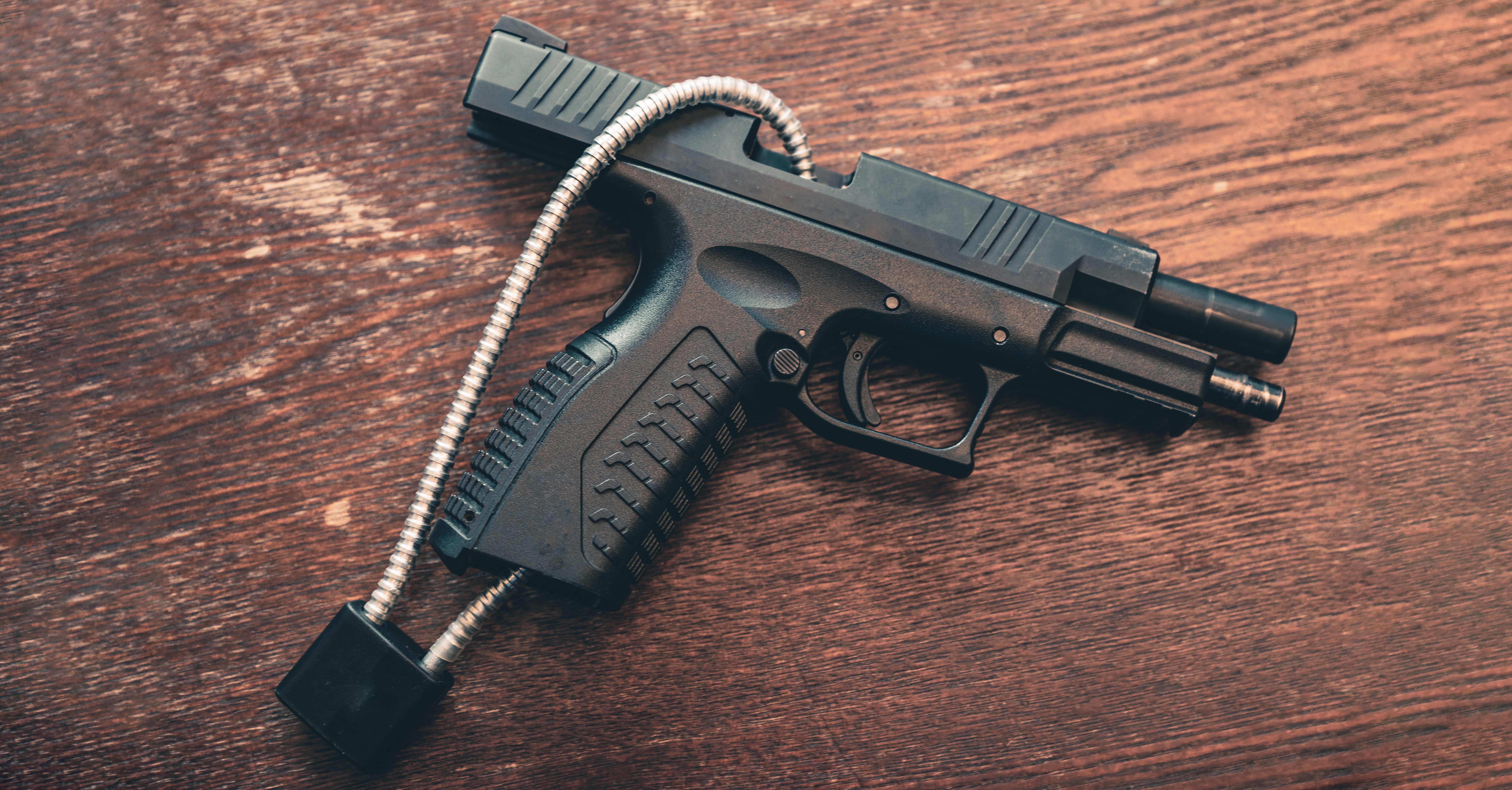Supreme Court weighing constitutionality of federal law that bars domestic abusers from possessing guns

Q&A with April Zeoli
Associate Professor, Health Management and Policy
The Supreme Court heard arguments last week in U.S. v. Rahimi, a case that involves a constitutional challenge to a federal law that strips gun ownership rights from people under domestic violence protection orders.
The question? Does the law violate domestic abusers' Second Amendment right to bear arms? A decision is expected in June.
"Research, including my own, suggests that these laws save lives. We know that in cases of intimate partner violence, the risk of homicide of the female partner by the male partner increases fivefold when a firearm is involved," said April Zeoli, associate professor of Health Management and Policy at the University of Michigan School of Public Health and policy core director at U-M's Institute for Firearm Injury Prevention.
"Research also suggests that when an intimate partner homicide involves a gun, the risk of additional victims, such as children, being killed increases. Indeed, the majority of mass shootings involve the killing of intimate partners and family members. There is a link between mass shootings and perpetrators of intimate partner violence with firearms."
What is your greatest concern should the law in question be overturned?
My greatest concern is that more people will die or be harmed. The research suggests that when states have these laws in place, there is a reduction in intimate partner homicide. If these laws are deemed unconstitutional, and domestic abusers are allowed to keep their firearms and buy more, it could result in more people dying, more homicides that could have been prevented.
Is it an exaggeration to say that restraining orders that temporarily limit firearms possession not only protects the victim but also that person's family and friends?
Research shows that when an intimate partner homicide is committed with a gun vs. other weapons, there is an increased risk that additional people will be killed or harmed. Those additional people are often other family members, including children, friends, strangers and even law enforcement officers. I should add that even when a firearm is used nonfatally, for example to threaten, this has a detrimental effect on the victim's mental health over and above intimate partner violence that doesn't involve a firearm.
In your recent law review article analyzing domestic violence protection orders, what is the top takeaway?
The article goes through the legal arguments for the constitutionality of the domestic violence protective order firearm prohibition, determining that it stands on a solid, constitutional foundation. Part of that foundation includes historical laws that prevented access to firearms for individuals the government deemed dangerous. We detail the research showing the dangerousness of domestic abusers, focusing on the risk access to firearms brings to these violent situations. The main takeaway is that these domestic abusers are dangerous and these laws are constitutional and save lives.
What about the argument: If not a firearm, then they'll find another way?
I hear this argument fairly frequently. This argument assumes a planned homicide, and many of these homicides are quick decisions made in the moment and not pre-planned. Firearms are far more lethal than other weapons and they can be used from a distance, which is different from other weapons. Essentially, this means that it's easier to kill or harm someone with a firearm than any other weapon. If a gun isn't available, it won't be used and a life may be saved. Importantly, the research shows that when a state has this law, the total number of intimate partner homicides decreases, not just intimate partner homicides committed with firearms. This suggests that there isn't a replacement to other weapons and that these laws save lives.
Could you describe research into domestic violence and mass shootings?
Mass shootings are generally defined in research as the shooting and killing of four or more people in one event. The majority of mass shootings involve the killing of intimate partners and/or family members. We often don't hear of these mass shootings in the news because mass shootings that involve the deaths of strangers and that occur in public places, or in schools, are judged to be more "newsworthy." But we need to be aware of them in order to fashion solutions and interventions to these family mass shootings. Domestic violence firearm restrictions may be one of those solutions. Research has shown extreme risk protection orders, also known as red flag laws, can help prevent firearm injury events, including multiple victim and mass shootings, by addressing the threat prior to an event occurring.
Are you worried about a ripple effect of this challenge on other laws meant to keep firearms out of the hands of high-risk individuals?
In the summer of 2022, the Supreme Court ruled that to be constitutional, modern firearm legislation must be analogous to historical firearm legislation. This ruling, referred to as the Bruen decision, has led to numerous existing firearm statutes being challenged in the courts, some of which have been found unconstitutional in lower courts. I believe the evidence and history supports the constitutionality of the domestic violence protective order firearm prohibition. We will see how the Supreme Court rules in this case and whether they clarify to lower courts what exactly is required for a modern day law to be deemed analogous to a historical statute.
Media Contact
Kim North Shine
Senior Public Relations Representative, Health Sciences
Michigan News
[email protected]
313-549-4995
